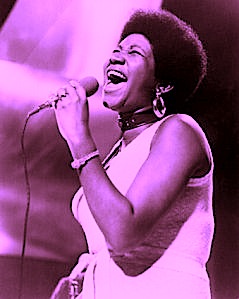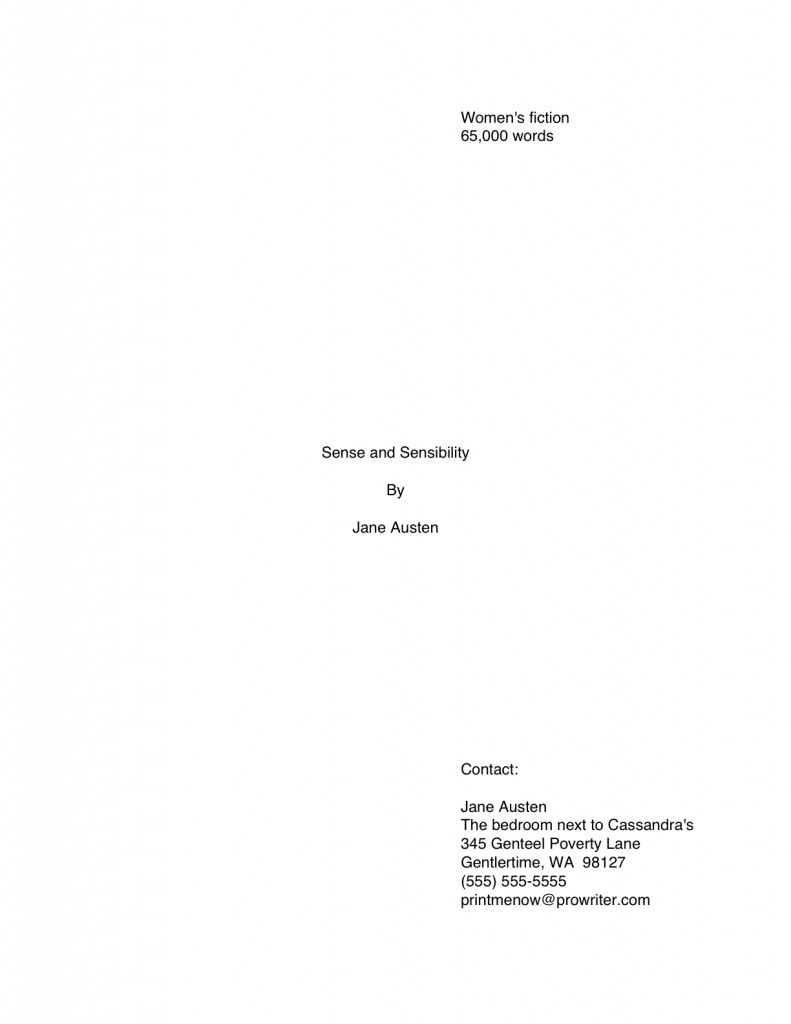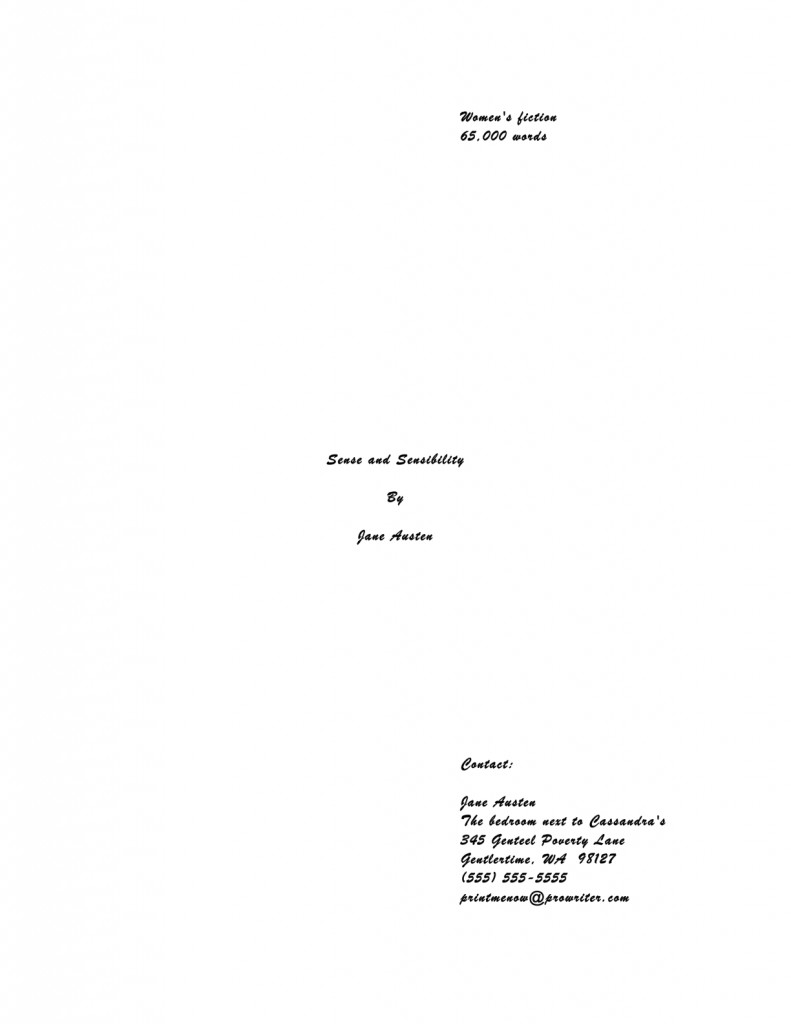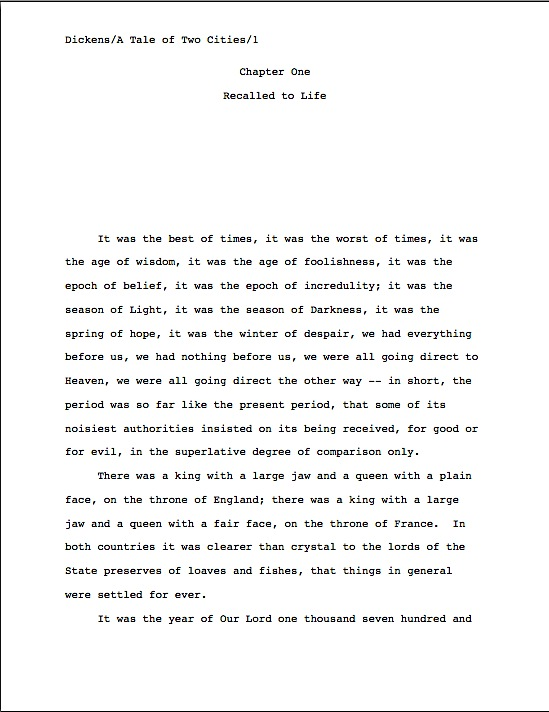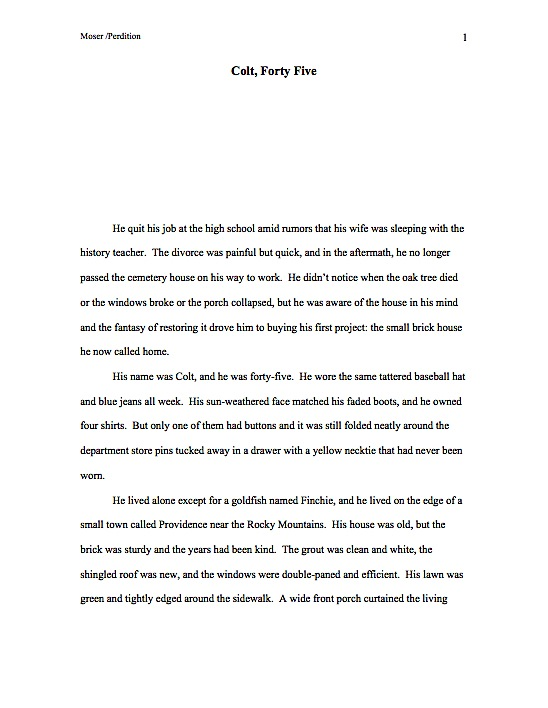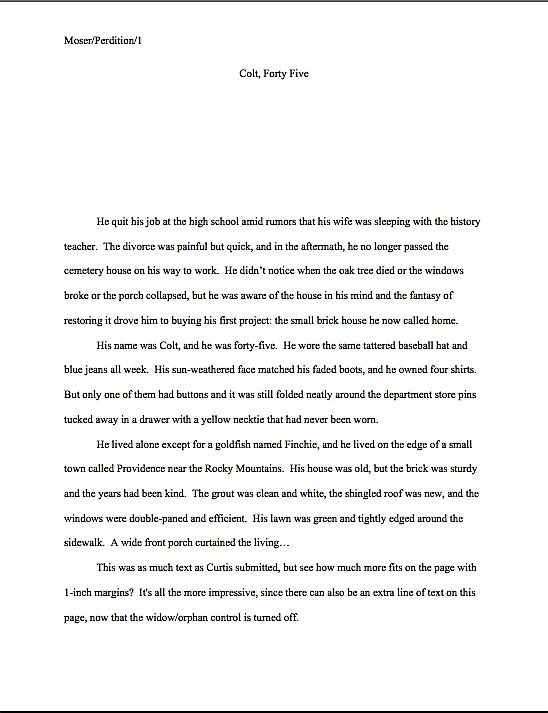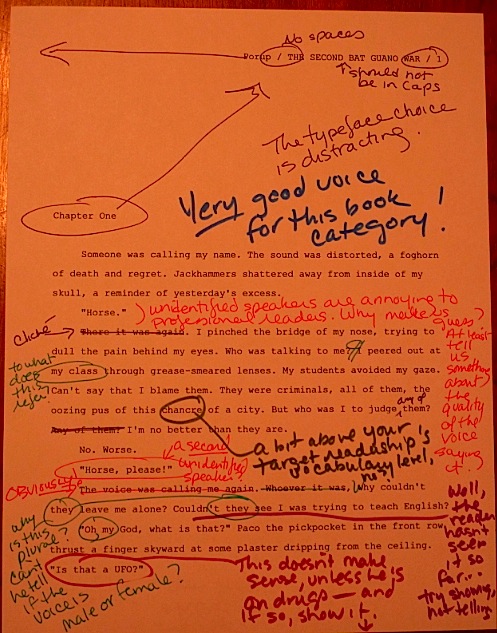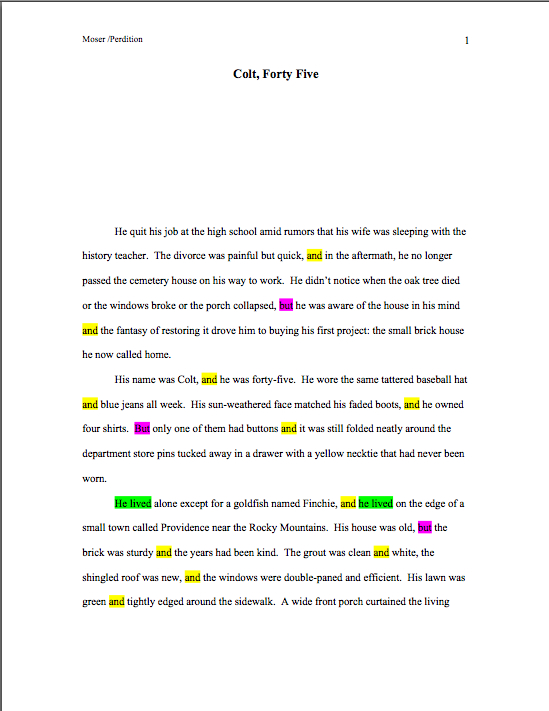Ooh, we have a burgeoning buffet of professional readers’ pet peeves on the Author! Author! sideboard today, campers. Let’s begin with a personal least-favorite of mine that I hope and pray will shortly be a least-favorite of yours.
In anticipation of that happy day, may I ask a favor of all of you involving the eradication of an unfortunately ubiquitous query letter pet peeve? Would those of you who have been sending out queries containing the phrase complete at X words kindly erase them?
Right now, if it’s not too much trouble. I’ve just seen my 500th query this year to include the phrase, and while I pride myself on being a tolerant, writer-friendly professional reader, I’m sick of it. It’s clumsily phrased, unoriginal, and it’s not as though it will do a query any good.
Yes, you read that correctly: this phrase can only harm a query packet’s chances of success. Stop it, please, before it kills again.
Is that giant collective gasp an indication that this phrase is lifted from some soi-disant foolproof online boilerplate? As those of you who have been hanging around Author! Author! for a while are already aware of how I feel about those pernicious one-size-fits-all query patterns, I shan’t reflect yet again on their overall efficacy, but even amongst those who don’t moan, “Why do all of today’s queries read identically?” on a regular basis have been perplexed by this awkward phrase’s sudden rise in popularity. It popped into usage only fairly recently — one seldom saw it before ten years ago — but it is far too pervasive to have been passed along by word of mouth alone. Since it contains a piece of information anyone who has taken a conference course on query-writing should know does not need stating, this stock phrase is unlikely to have originated from the writers’ conference circuit.
So whence, the pros wonder, did it emerge? Some doors mankind is not meant to open, I guess.
More importantly for pet peeve-avoidance purposes, why might this innocent-seeming phrase set Millicent the agency screener’s teeth on edge? Simple: if the manuscript being queried is fiction, any agency employee would presume that what the writer is offering is a finished version of the book. First novels are sold on complete manuscripts, period; it would not make sense, therefore, to approach an agent with an incomplete draft. Using precious query letter page space to mention something so obvious, then, is a quite reliable sign of inexperience.
“Besides,” Millicent grumbles, “isn’t part of the point of the query to impress me with one’s writing skills? How on earth am I supposed to be impressed with a writer who stuffs her letter to the proverbial gills with uninspired stock phrases? Show me your phrasing, not some canned clause lifted from the same allegedly sure-fire template half of the queriers who will contact my boss this week will be using!”
Through the whish-whish-whish of frantic erasing on query letter drafts all over the globe, some faint cries of protest arise. “But Anne,” those of you who habitually tuck the phrase into your opening paragraphs argue, “I just thought that was the professional way of including the word count. I realize that Millicent wants to see some original writing, but honestly, isn’t this information to express as quickly as possible and move on?”
The short answer is this: why include it at all? (And the long answer is W-H-Y-I-N-C-L-U-D-E-I-T-A-T-A-L-L?)
No, but seriously, folks, word count is not a standard, necessary, indispensable part of a query. Yes, some agents do prefer to see it up front (and if they have expressed that preference in public, by all means, honor it), but as including it can only hurt a submission’s chances, I’m not a big fan of mentioning word count in a query letter at all. Don’t lie about it if an agency’s guidelines ask for this information, of course, but don’t volunteer it.
And don’t, whatever you do, assume that because some agency guidelines request word count that every agent will expect to see it. As those of you familiar with last autumn’s Querypalooza series may recall, it’s very, very common for an individual agent’s personal preference, once expressed in passing at a conference or in an interview, to be broadcast by well-meaning aspiring writers as the newly-revealed universal key for landing an agent.
But individual preferences are just that: individual. Pretending that every agent currently accepting clients in the United States wants to see word count in the first paragraph of the query letter (and, the accompanying logic usually goes, will automatically reject a query that does not announce this information within the first three lines), despite the fact that the majority of posted submission guidelines do not ask for it, makes about as much sense as including the first 5 pages of text in your query packet as a writing sample just because one of the fifteen agencies you decided to query last week called for you to include it. Out comes the broken record again:
 When querying, as when responding to a request for materials, send precisely what that particular agent wants to see — no more, no less. Because part of what a querier is demonstrating in a query packet is the ability to follow directions — a perennially agent-pleasing trait — there is just no substitute for checking every individual agency’s submission guidelines every single time.
When querying, as when responding to a request for materials, send precisely what that particular agent wants to see — no more, no less. Because part of what a querier is demonstrating in a query packet is the ability to follow directions — a perennially agent-pleasing trait — there is just no substitute for checking every individual agency’s submission guidelines every single time.
Or, to quote the late, great Fats Waller, find out what they like and how they like it — and let ‘em have it just that way.
It’s a matter of respect, really. Adhering to any given agent’s expressed querying preferences is a laudable means of demonstrating from the get-go that you are serious enough about your writing not to want just any agent to represent it — you want a specific agent whom you have determined, based on his past sales record, would be a good fit for your book.
According to this principle, an aspiring writer’s including word count is a courtesy to those who ask for it. Offering it unasked to those who do not is, while certainly not required, something that Millicent is likely to regard as a positive blessing — but that doesn’t mean it’s in your best interest to do it.
Why? Knowing from the get-go that a manuscript is too short or too long for its stated book category can save a query-screening Millicent masses of time. Shouting, “Next!” is, we all must recognize, quite a bit speedier than sending out a request for materials, waiting for them to arrive, then seeing first-hand that a manuscript falls outside the length norms.
Heck, if the querier followed the extremely common precept that complete at 127,403 words should appear in the letter’s opening paragraph, she might not even have to read a single additional sentence; if her agency happens to adhere to the belief that 100,000 words is the top cut-off for a first novel — as is the case in most fiction categories — she would have no reason to request the manuscript.
“How kind of this writer,” she murmurs, reaching for the never-far-off stack of form-letter rejections, “to have waved that red flag up front. This way, there’s no possibility of my falling in love with the text before realizing it’s too long, as I might easily have done had I requested pages.”
That one-size-fits-all boilerplate is no longer fitting so comfortably, is it? Typically, agencies that request word count up front like to see it for precisely the same reason a Millicent at a non-requesting agency would be so pleased it appeared: it enables them to reject too-long and too-short manuscripts at the query stage, rather than the submission stage. In essence, it’s asking the writer to provide them with a means of speeding up her own rejection.
But should you include it in a query, if the agency guidelines ask for it? Absolutely: it’s a matter of respect.
I hear you grumbling, campers, and who could blame you? But you might want to brace yourselves, complete at… users; you’re going to like what I’m about to say next even less: many queries rejected for on the basis of excessive word count are actually not too long for their chosen book categories. The listed word count merely makes them appear too long.
“How is that possible?” word count-listers everywhere howl, rending their garments. “I’ve been including what my Word program claims is the actual number of words in the document. By what stretch of the imagination could that number be misinterpreted?”
Quite easily, as it happens: that 100,000 word limit I mentioned above does not refer to actual word count; it is an expression of estimated word count. Although actual word count is appropriate to list for short stories and articles, it is not the norm for book manuscripts — but again, individual agents’ preferences do vary. Therein lies the miscommunication: the overwhelming majority of the considerate souls busily typing complete at… up use actual word count, not estimated, leading Millicent to conclude that a long manuscript contains quite a few more pages than it really does.
Why would she assume the word count is estimated? Respect for the traditions of her industry, mostly: before the rise of Word and its automatic word-count function, estimating was hours more efficient than laboriously counting each and every word. Just as magazines and newspapers used a standard number of words per line, the publishing industry came up with an average for the two most common typewriter key size’s words per page: 250/page for Elite, 200/page for Pica.
With the rise of the home computer, that expectation carried over to the most similar fonts: the standard estimation for a standard manuscript in Times New Roman is 250 words/page; for Courier, it’s 200 words/page. Since TNR is the industry standard, when Millicent sees 100,000 words, she automatically thinks 400 pages.
I see some of you shaking your heads and calling her a Luddite, but for the agency’s purposes, an estimate is more useful than a toting-up of every word. Think about it: since the number of words that appear on a page can vary wildly, actual word count does not tell an agent or editor how many pages to expect, does it? That’s legitimate information for Millicent to consider: the page count is part of the publication cost calculation generally included in the paperwork an editor has to fill out before taking an exciting new project before an editorial committee.
While there is not a one-to-one correlation between the number of pages in a manuscript and the number of pages in its published form — most submission manuscripts shrink by about two-thirds by the time they hit hard copy — page count is hugely important in figuring out how expensive it will be to publish a book. The more pages, the greater the amount of paper and ink required, obviously. Perhaps less obviously, longer books are substantially more expensive to produce than shorter ones: at about 500 pages (an estimated 120,000 words), the binding costs rise dramatically.
Starting to see why our Millie might reject a query that told her in line 3 that it was complete at 127,403 words?
Unfortunately, the majority of queriers who use actual word count, as would be appropriate for a short story or magazine article, are unaware of this publishing reality. Compounding the problem: almost invariably, this number is higher than the estimate would lead one to expect: it is well within the realm of possibility that 127,403-word manuscript would be closer to 400 pages than 500. (Which is why, in case those of you who already have agents had been wondering, agents representing long first novels generally leave the word count off the title page.)
The actual number of pages is irrelevant at rejection time, though, if querier and query-reader are operating on different sets of expectations. While the last digit in that actual count might tip off a professional reader that the writer is using actual count, not an estimate a Millicent in a hurry — and with good math skills — is prone to spot that number and mutter, “509 pages! That’s far too long for a first novel in this category! Next!”
It makes the muses sad enough if the title page prompts this reaction. Imagine, then, how bitterly the muses weep when a good novel gets rejected in this manner because the writer thought the first paragraph of her query needed to contain the words complete at…
Just take it out, willya? I’m tired of listening to the old girls bawl.
Speaking of notorious query-related pet peeves that often engender a cry of “Next!” — and speaking of ungraceful phrases; that segue was a lulu — it would be remiss of me not to mention two others. Since they are such perennial favorites, annoyances to Millicents dating back to at least the Eisenhower administration, let’s haul out the broken record player again, shall we? Nothing like a one of those old-fashioned phonographs when one wants to dance to the oldies-but-goodies.
 When approaching an agency with several agents who represent your type of book, it’s considered rude to query more than one of them simultaneously. Pick one — and only one — to approach in any given year.
When approaching an agency with several agents who represent your type of book, it’s considered rude to query more than one of them simultaneously. Pick one — and only one — to approach in any given year.
 In publishing, as in so many other areas of life, no means no. If an agent has rejected your query or submission, it’s considered rude to re-approach that agent with the same project again, ever. If the agent wants you to revise and submit that particular manuscript, he will tell you so point-blank; if he likes your voice, but does not think he can sell the manuscript in the current market, he may ask to see your next book.
In publishing, as in so many other areas of life, no means no. If an agent has rejected your query or submission, it’s considered rude to re-approach that agent with the same project again, ever. If the agent wants you to revise and submit that particular manuscript, he will tell you so point-blank; if he likes your voice, but does not think he can sell the manuscript in the current market, he may ask to see your next book.
The second is fairly well-known, but aspiring writers new to the game are constantly running afoul of the first. In a way, that’s completely understandable: if one doesn’t take the time to learn what each agent at a particular agency has represented lately — and few queriers do — it can be pretty difficult to tell which might be the best fit for one’s book.
“I know!” the aspiring writer says, feeling clever as it occurs to her. “I’ll just send it to both of ‘em. That way, I can’t possibly guess wrong which is the agent for me.”
And then both of those queries appear in the inbox belonging to those agents’ shared Millicent. What do you think will happen?
Hint: it has to do with respect. And if you were about to say, “Why, Millicent will weigh carefully which agent would be the most appropriate for my work and forward my query accordingly,” you might want to reconsider you answer.
I don’t care who hears me say it: this is a business where politeness counts. Sending queries to more than one agent at an agency or over and over again to the same agent is, quite apart from self-defeating behavior, an annoyance to those who have to deal with those queries and manuscripts. Need I say more?
Oh, I do? Okay, try this explanation on for size: no one, but no one, likes to be treated as a generic service-provider. Most agents pride themselves on their taste, their insight into current market conditions, and their client list. So when an aspiring writer targets agents with side-by-side offices, as though it were impossible to tell the two of them apart, it’s tantamount to saying, “Look, I don’t care which of you represents me; all agents look alike to me. So what does it matter that one of you already said no?” The same logic applies when a writer queries the same agent who has already rejected that book project: respect for an agent’s choices would dictate honoring that no the first time around.
Speaking of respect issues, let’s not forget the single most common screeners’ pet peeve of all: unprofessionally formatted manuscript submissions. While this is seldom an instant rejection trigger all by itself, not presenting one’s writing in the manner in which the pros expect to see it does mean, effectively, that one is walking into the submission process with one strike against the book.
See why that might prove problematic, in a situation where a manuscript seldom gets more than two strikes before being tossed out of the game?
While veteran members of the Author! Author! community sigh with recognition, those of you new to this blog look a trifle bewildered. “Whoa!” perplexed agent-seekers everywhere cry. “How is formatting a respect issue? Baseball metaphors aside, how on earth could how I choose to present my words on the manuscript page be construed as in any way indicative of my general attitude toward the agent to whom I am sending it? Or, indeed, toward the publishing industry?”
Fairly easily, from the other side of the submission envelope. As it may not be entirely astonishing to you by this point in the post, when Millicent spots an improperly-formatted manuscript, she sees not only a book that needs at least some cosmetic revision to bring up to professional standards, but a writer who does not have enough respect for the industry he aspires to join to learn about its expectations and norms.
“Oh, presentation doesn’t matter,” Millicent imagines the brash new writer saying as he doesn’t bother to spell-check. “That’s my future editor’s job to fix. All that matters is the writing, right?”
Actually, no. Any good agent receives far, far too many beautifully-written manuscripts from aspiring writers who have taken the time to present them properly to waste her time with those that do not. This is such a common rejection reason that there’s even a stock phrase for it.
“That writer is talented,” publishing types will say to one another, “but he hasn’t done his homework.”
Yes, this is often said of talented writers who have yet to develop technical skills, but as any Millicent could tell you, rejection reasons are like wolves: they tend to travel in packs. Improper formatting is merely the quickest indicator of a lack of professionalism to spot. Since all professional book manuscripts and book proposals in this country look alike, adhering to a standard format distinct from what is de rigueur for short stories, articles, academic writing, and even many contests, Millicent can often literally identify a submission from someone who hasn’t done her homework at five paces.
To a literature-lover who handles manuscripts for a living, that’s a genuinely astonishing authorial choice. Unhappily, not doing one’s homework is infinitely more popular than doing it — which, when you think about it, doesn’t make a great deal of sense as a long-term strategy for publishing success. Even the most naturally talented baseball player doesn’t expect to hit a home run the first time he steps up to the plate, after all; he knows that he must learn the rules and hone his skills before he has a chance at the big leagues.
Many, if not most, aspiring writers, by contrast, seem to believe that the New York Yankees are going to sign them the first time they pick up bats and don gloves. Can you really blame Millicent for feeling that’s just a trifle disrespectful to all of the great authors who have invested the time in learning to play the game?
“But Anne,” those of you new to querying and submission point out huffily, “why should it surprise anybody that a first-time novelist, memoirist, or book proposer should not already know every nuance of how the industry works? Why is being new a problem to a business ostensibly concerned with seeking out what is fresh and exciting?”
Good question, neophytes. To those used to dealing with professional manuscripts, everything that appears on the page is assumed to be there because the writer made an active choice to include it. By that logic, a typo is never just a typo: it’s either a deliberate misspelling for effect, a proofreading omission, or evidence that the writer just can’t spell. The same holds true for holes in a plot, voice inconsistencies — and yes, formatting.
As I may seven or eight hundred times recently, good agents are inundated with fresh, exciting manuscripts that do not have these problems; clearly, then, it is possible for a writer brand-new to the biz to learn how to avoid them. So when a promising writer has not taken the time to burnish her submission to a high polish, it’s likely to look an awful lot like an assumption that his future agent is going to do all the work of bringing that manuscript into line with professional standards for her.
In other words, not formatting a submission in the manner Millicent has been trained to expect will effectively mean that she will start reading it already assuming that it is not the final draft. How could a manuscript that does not adhere to professional presentation standards be considered a completely polished manuscript?
It’s not as though the agent of your dreams could submit it to an editor that way, after all. An agent who permitted her clients to deliver work in any of those formats would have to waste her own time changing the cosmetic elements so it would be possible to take it to a publishing house. For this reason, Millicent regards incorrectly-formatted work as indicative of a writer not particularly serious about his work .
Or, to put it a trifle more bluntly: she’s not judging it on the writing alone. Necessarily, she has to consider how much extra time her boss would have to invest in a writer who would have to be trained how to put together a manuscript.
I see those of you who worked your way through last autumn’s mind-achingly detailed Formatpalooza series rolling your eyes. “Yes, yes, we know, Anne,” veteran format-contemplators say wearily. “You walk us through standard format at least once a year, addressing at length the digressions from it in which aspiring writers all too frequently unwittingly indulge at great cost to their books’ submission chances. I now no longer add a row of asterisks to indicate a section break, allow Word to alter my doubled dashes with spaces on either end to emdashes bridging the space between the words before and after, nor embrace the AP style practice of capitalizing the first word after a colon, as if it were the beginning of a new sentence. Heck, I even know what a slug line is. I still secretly agonize in the dead of night because another website — one that does not draw a firm distinction between the correct format for a book manuscript and how a short story should be submitted to a magazine, perhaps — says I should place the chapter title on the line directly above the first line of text, as is proper for a short story, rather than on the first line of the page, as is appropriate for a book manuscript, but overall, I feel pretty good about how professional my submissions look. Why keep nagging me about it?”
Actually, my frequent reminders of the importance of adhering to standard format are not aimed at you, conscientious researchers, but toward those who have not yet learned to emulate your laudable example. Aspiring writers who have taken the time to learn the expectations of the industry into which they are trying to break are not, generally speaking, those whose submissions make Millicent grind her teeth down to nubs. If you’re already following the rules, chances are good that she is judging your manuscript on your writing.
Congratulations; that’s a relative rarity. Unfortunately for the overall happiness of aspiring writers everywhere, most submissions reflect an almost complete lack of awareness that standard format even exists. Oh, most are double-spaced and feature page numbers (although you would be astonished at how often the latter are omitted), but beyond the application of one or two isolated rules, it’s quite obvious that the writers who produced them think presentation doesn’t matter.
Surprised to hear that’s the norm? You’re in good company — Millicent is flabbergasted. Despite a wealth of formatting advice floating around the Internet — some of it accurate, some of it not — the average manuscript landing on her desk displays a blithe disregard of standard format. It’s almost as though it’s daring her to like the writing in spite of the careless presentation.
It is, in short, disrespectful. And we all know how Millicent, the industry’s gatekeeper and thus the person who sees far more promising writing gone wrong than anybody else, tends to respond to that: “Next!”
I’m bringing all of this up in the middle of our ongoing discussion of craft not to say that presentation is more important than the writing quality — no one who dealt with manuscripts for a living would argue that — but to remind everyone that to a professional reader, everything on that page matters.
There are no free passes for careless omissions; with any given agency, there are seldom even second chances after an insufficiently-polished first approach. Yet despite the vital importance of making a good first — and second, and third — impression, most good writers become so impatient to see their words in print that they start sending out queries and submissions half an hour after they type THE END.
Sometimes even before. Had I mentioned that it’s considered disrespectful to query a manuscript that is not yet completed? (It is, perversely, acceptable to give a verbal pitch at a conference under the same circumstances, however. Agents and editors who hear pitches know how stressful it is; most would agree that a practice run at it a year or two before one is doing it for real isn’t a bad idea.)
As exciting as the prospect of getting your baby published may be, sending it out before it’s ready to meet Millicent is not the best long-term strategy. At least not now, when personalized rejection letters have become exceedingly rare: while up to about a decade ago, an aspiring writer could hope to gain valuable and useful feedback from the submission process, now, the volume of queries and submissions is so high that the manuscript that prompted Millicent to mutter, “Oh, here’s another one who didn’t do his homework,” and the carefully-polished near-miss are likely to receive precisely the same form-letter rejection: I’m sorry, but I just don’t think I can place this book successfully in the current tight literary market.
The wording may vary slightly, but the sentiment is the same. Aspiring writers are not the only population fond of boilerplates, apparently.
Choose your words thoughtfully, take the time to learn the rules of submission, and treat your future agent — and his Millicents — with respect. Believe me, once you are working with them on an intensive basis, you’ll be glad you did.
Next time, we’ll wend our way merrily back to the Short Road Home. Keep up the good work!

